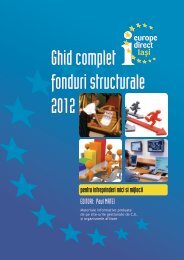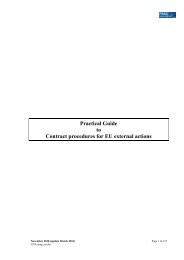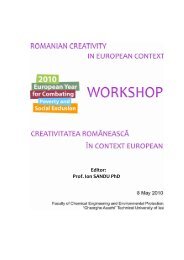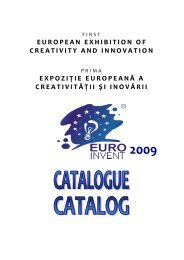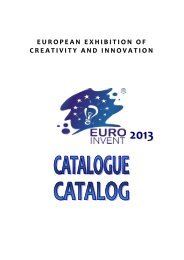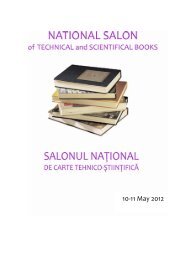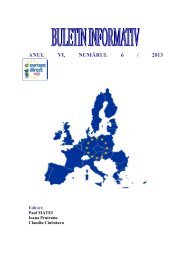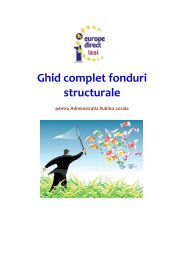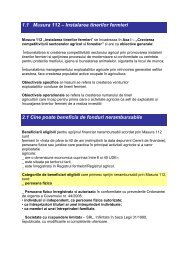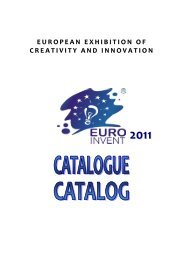2012 - Europe Direct Iasi
2012 - Europe Direct Iasi
2012 - Europe Direct Iasi
Create successful ePaper yourself
Turn your PDF publications into a flip-book with our unique Google optimized e-Paper software.
X. 29.<br />
Title<br />
Authors<br />
EUROINVENT <strong>2012</strong><br />
Financial support was provided by the project<br />
POSDRU/89/1.5/S/49944.<br />
SYNTHESIS OF SILVER/CHITOSAN/CLAY<br />
BIONANOCOMPOSITES USING CHEMICAL REDUCTION<br />
METHOD<br />
Claudia-Mihaela Hristodor, Violeta Elena Copcia, Andrei Victor<br />
Sandu, Eveline Popovici<br />
Institution “Alexandru Ioan Cuza” University of <strong>Iasi</strong><br />
Description<br />
In this study, silver nanoparticles silver/chitosan were<br />
synthesized into the lamellar space of clay using the chemical<br />
reduction method (ascorbic acid as reducing agent). Chitosan,<br />
clay, and AgNO3 were used as the natural polymeric stabilizer,<br />
solid support, and silver precursor, respectively. The properties<br />
of silver/chitosan/clay bionanocomposites were studied as the<br />
function of concentration of silver/clay ratio. The textural and<br />
morphological properties were studied. Meanwhile, the<br />
crystalline structure and d-spacing of the clay interlayer, average<br />
size and size distribution, surface morphology, elemental signal<br />
peaks, functional groups, and surface plasmon resonance of<br />
silver/chitosan/clay were determined by powder X-ray<br />
diffraction (XRD), FTIR spectroscopy, N2 adsorptiondesorption<br />
isotherms, particle size analysis and Scaning Electron<br />
Microscopy (these studies infer that the particles are mostly<br />
spherical in shape) which reveal of the nano nature of the<br />
particles.<br />
Financial support was provided by the project<br />
POSDRU/89/1.5/S/49944.<br />
X. 30.<br />
Study of the retention capacity of iron salts by ceramic material :<br />
Title<br />
Application for the removal of residual coagulant in drinking<br />
water<br />
Authors J.M. SIELIECHI, G. JOSEPH KAYEM, I. SANDU<br />
Institution University of Ngaoundere, Cameroon<br />
Description<br />
The objective of this work is to used natural materials<br />
(biomaterials) to reduced the residual coagulants in drinking<br />
water. The aluminum and iron contents in drinking water can<br />
mainly be derived from the water treatment process because<br />
these metal ions is commonly used as reactant for coagulationflocculation.<br />
When the optimum physico-chemical condition of<br />
the treatment of raw water is not well established, the probability<br />
Innovative Researches<br />
184



